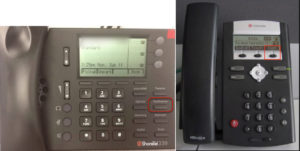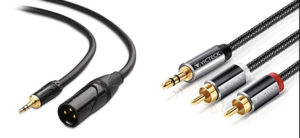Conducting a panel discussion with the conference call feature
What is the conference call feature?
The conference call feature on a mobile phone or landline allows you to have many people on the line at one time. It’s a particularly useful feature for broadcasters who find it difficult to convene panelists for an in-person discussion but still want to air the discussion as part of their radio program.
This BH2 is about conducting panel discussions over the phone. To learn more about how to conduct an effective panel discussion in general, please read Farm Radio’s BH2.
How can the conference call feature help me conduct effective panel discussions?
- It allows you to invite people to participate in a panel who cannot appear in person at your radio station.
- It is low-cost and simple to use.
How can the conference call feature help me produce better programs?
- It creates entertaining and interesting radio.
- It encourages a diversity of views and perspectives.
- It can prompt topics of conversation that will help me plan future programs.
How do I get started?
- Set up the conference call feature
- Connect the phone to the radio switchboard
- Coach your guests on conference call etiquette
- Plan for technical difficulties
- Try a recorded conference call
- Plan for feedback from listeners
Details
1. Set up the conference call feature
Depending on the available technology at your radio station, you might use a landline phone to do a conference call, or you might use apps like Skype, Google Hangouts, Zoom, etc. to convene your panelists. Follow these steps if you are using a landline:
- Pick up the phone and press the “Talk” or “Flash” button.
- Dial the first number. Wait for them to answer the call, and when they pick up, inform them that you are putting them on hold.
- Press the “Talk” or “Flash” button and dial the second number. Wait for them to answer.
- When they answer, press the “Talk” or “Flash” button again. All parties should be connected to the call.
- Repeat these steps as many times as necessary to connect all panelists in the conference call.
This is what the conference call feature button looks like on standard landline phones:

The following links contain information for setting up a conference call feature on various apps:
Skype: https://bit.ly/2IGb4Ow
Google Hangouts: https://bit.ly/2ZSvRpS
Zoom: https://bit.ly/1QKGjJF
You can also set up a conference call on a mobile phone by downloading an app. Here is a list of applications you can try for Android and for iOS: https://bit.ly/2xhWnww
Note: Whichever method you use, be sure to conduct a trial conference call before the live program. This will enable you to identify and solve any technical difficulties.
2. Connect the phone to the switchboard
In order to take live phone calls and broadcast a phone panel discussion over the radio, you will need a switchboard, a microphone, a pair of headphones, an XLR cable, an RCA phone audio cable, and a landline or mobile phone or tablet.
To set up, connect your microphone to the switchboard with an XLR cable like the one pictured on the left below.

XLR cable & RCA phone audio cable
Then, connect your phone or tablet with an RCA phono audio cable to another channel on the switchboard. Make sure each channel is set correctly. For example, channel 1 might be set to “mic” and channel 3 might be set to “phono line.”
Connect a pair of headphones to help you monitor and adjust your volume level or your guests’ volume levels if necessary.
For more detailed instructions for setting up phone calls during a radio show, watch this video: https://www.youtube.com/watch?v=_nrqVUVFa8Y
3. Coach your guests on conference call etiquette
Before airing the live program, try to arrange a trial run with all of your panelists. This is a good opportunity for everyone to introduce themselves and say a little bit about their background since they might not have met in person. Remind your panelists of the following points on conference call etiquette:
- Find a quiet place to join the call where you won’t be distracted and reception is clear.
- Introduce yourself and make an opening statement—but keep it brief!
- Mute your mic or your phone line if you are not talking. This eliminates any distracting background noise or static.
- Know when and when not to speak. While you want your guests to contribute to a lively discussion, it is rude to speak over someone who is trying to make a point and it is also distracting for listeners. Advise panelists that they should wait until you or another panelist calls on them for a response, or they should wait for a pause in the discussion. Advise them to write down any comments or questions and respond only when someone has finished making their point.
4. Plan for technical difficulties
This can be tricky because some technical difficulties might be beyond your control. Perhaps the network is bad, or one of your guests unexpectedly drops the line. To address these challenges as well as you can, prepare an agenda before the call so that you can quickly move to the next topic of discussion. Or, explain to your listeners that the panel has been temporarily disrupted and move to another segment (music, advertisement, phone-in, etc.) while you fix the problem.
5. Try a recorded conference call
If it’s not possible to conduct a live conference call because of technical difficulties, lack of availability of guests, or other reasons, you could record a conference call and play it on the program. This allows you to reach experts regardless of geographical location and enables a lengthier conversation that you can edit later if necessary. Whether you decide to do a live or recorded conference call, broadcasters will save time and travel costs—which is important for every station!
6. Plan for feedback from listeners
Depending on the number of phone lines at your radio station, or the level of technology available to you, it might not be possible to have listeners call in during a conference call discussion. One solution is for your listeners to text in their comments and questions and have the panel respond to them. Alternatively, if you are broadcasting a live stream on social media, you can ask listeners to participate by commenting on Facebook, Twitter, Instagram, or other social media.
For other ideas, read our BH2 on how to gather regular feedback from your audience and our BH2 on how to use creative ways to get audience feedback.
Livestream on social media: A good way to gather feedback from your listeners is to live stream on social media platforms like Facebook, Twitter. or Instagram. That way, you can invite your listeners to leave comments and questions that you can respond to during the program. Follow these links to learn more about “going live” on each platform:
Facebook: https://www.facebook.com/help/iphone-app/1636872026560015?helpref=platform_switcher
Twitter: https://blog.twitter.com/en_us/a/2016/go-live-on-twitter.html
Instagram: https://help.instagram.com/292478487812558
Acknowledgements
Contributed by: Maxine Betteridge-Moes, Agricultural Knowledge Management Advisor, Farm Radio International, Ghana
